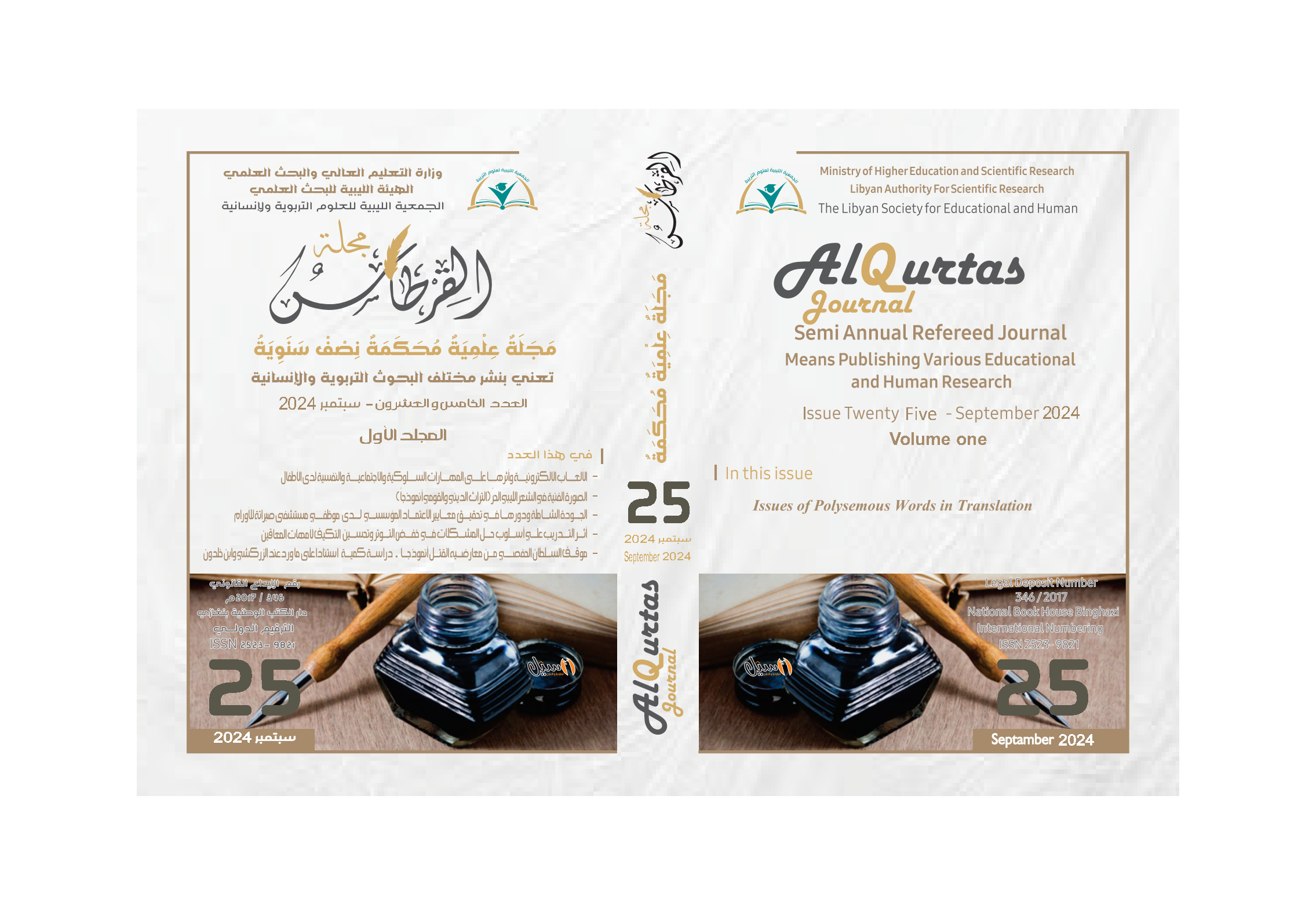Issues of Polysemous Words in Translation A case study of Fourth Year Students – Translation Sectionat Faculty of Languages & Translation in Zawia University
Main Article Content
Abstract
This study is carried out to shed light on one of the lexical problems affecting the performance of Fourth Year Students – Translation sectionat Faculty of Languages & Translation in Zawia University, while attempting to translate from English into Arabic and vice versa. This problem is the ambiguous nature of English words, particularlypolysemic words. In order to investigate this problem, we hypothesize that if 4th Year students make use of the linguistic context they will succeed in translating polysemous words. To check this hypothesis and to achieve the aims of this research, a test and a questionnaire are administered to a sample of Fourth Year students. One of the points of focus of this research is how context helps and may be reinforced in translating polysemous words. In other word,4th Year students rely on the linguistic context when attempting translation of polysemous words.Also, students’ potential of success in choosing the appropriate equivalent in the Target Language (TL) is examined. Overall, the findings of the study show that because of students’ lack of awareness of polysemy as a common feature of Arabic and English, and their dependence on the common meanings of polysemous words in sentences and texts, they encounter serious difficulties when carrying out translation tasks.

